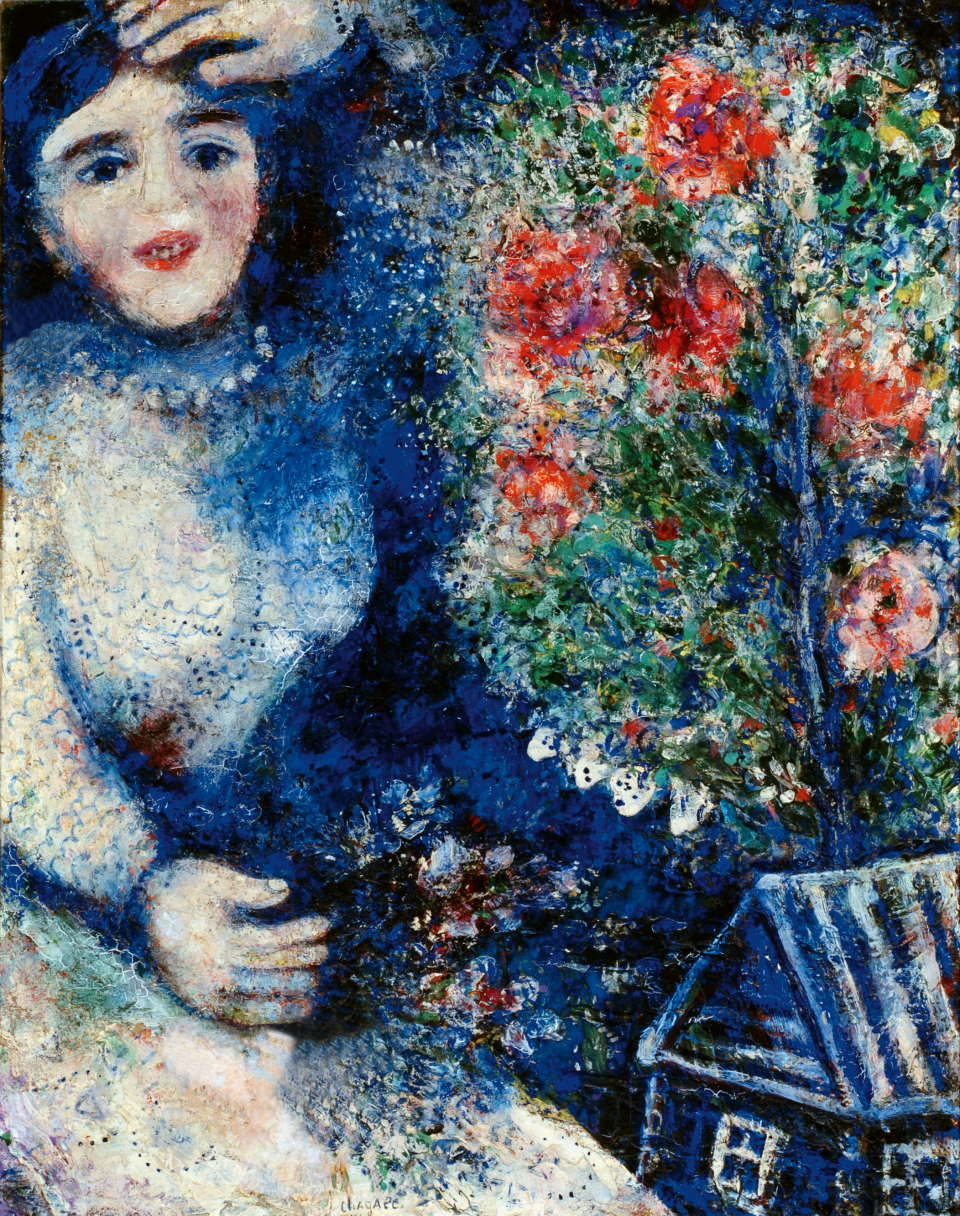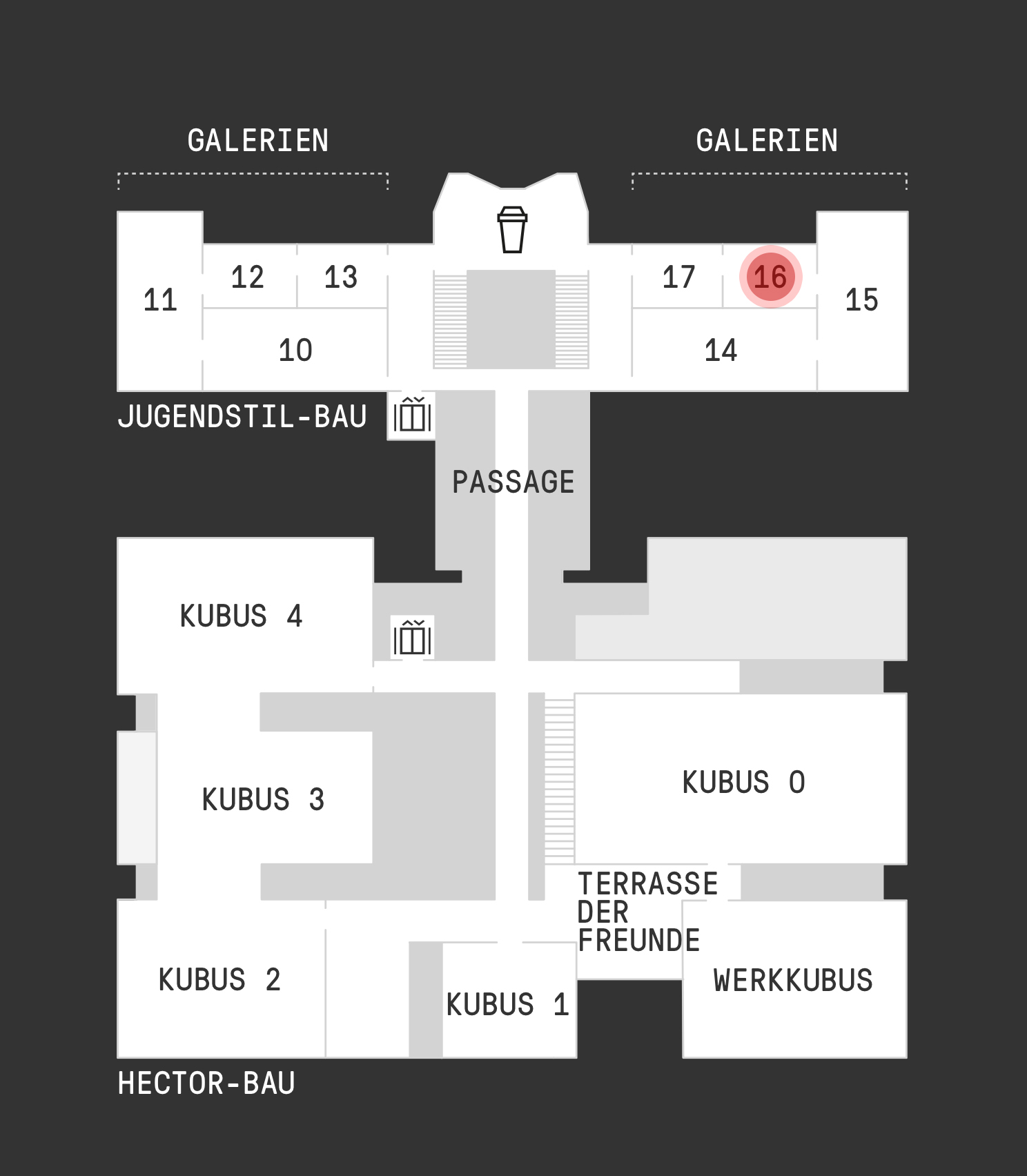
Marc Chagall
(1887-1985)
Marc Chagall
(1887-1985)Die Braut mit dem Blumenstrauß
Einstieg
Marc Chagall kombiniert in diesem Gemälde drei Motive – Braut, Blumenstrauß und Haus – aber ihre räumliche Anordnung bleibt vor dem tiefblauen Nachthimmel phantastisch und vage. Wie oft im Werk des russischen Künstlers vermischen sich Realität und Traum, das Bild entfaltet eine eigene, expressive Logik, aber auch eine sehr feinsinnige Magie, die nicht zuletzt mit Chagalls charakteristischem, lebhaft getupftem Farbauftrag zusammenhängt.
Die Braut selbst schwebt über Haus und Erde. In ihrem Schoß hält sie einen Blumenstrauß und blickt staunend auf einen noch größeren Strauß zu ihrer Linken, der einem verwandelten Baum ähnelt. Eine solche Metamorphose der Dinge ist vielen Werken Chagalls eigen. Auch das Motiv der Braut taucht im Werk des jüdischen Künstlers mehrfach auf. Einerseits kann sie im übertragenen Sinn als religiöses Bild für den Bund des jüdischen Volkes mit Gott gelesen werden. Andererseits steht sie für Chagalls Frau Bella Rosenfeld, die von ihm selbst als »Leitbild« seiner Kunst bezeichnet wurde.
Einstieg
In this painting, Marc Chagall combines three motifs—bride, bunch of flowers, and house—although their spatial arrangement against the deep blue night sky remains fanciful and vague. As is often the case in the work of the Russian artist, dream and reality intermix and the picture displays its own expressive logic, but also a subtle magic which, not least, is a result of Chagall’s characteristic and lively dabbed application of paint.
The bride floats above the house and the Earth. She is holding a bunch of flowers in her lap and is gazing with a sense of astonishment at an even larger bouquet to her left which looks like a transfigured tree. Such a metamorphosis of objects can be found in many of Chagall’s works. The motif of the bride also appears numerous times in the work of the Jewish artist. She can be seen, on the one hand, in a figurative sense as a religious picture expressing the union of the Jewish people with God, but also as representing Chagall’s wife, Bella Rosenfeld, whom he described as the “ideal” inspiring his work.
Kunsthalle Mannheim / Margita Wickenhäuser
)